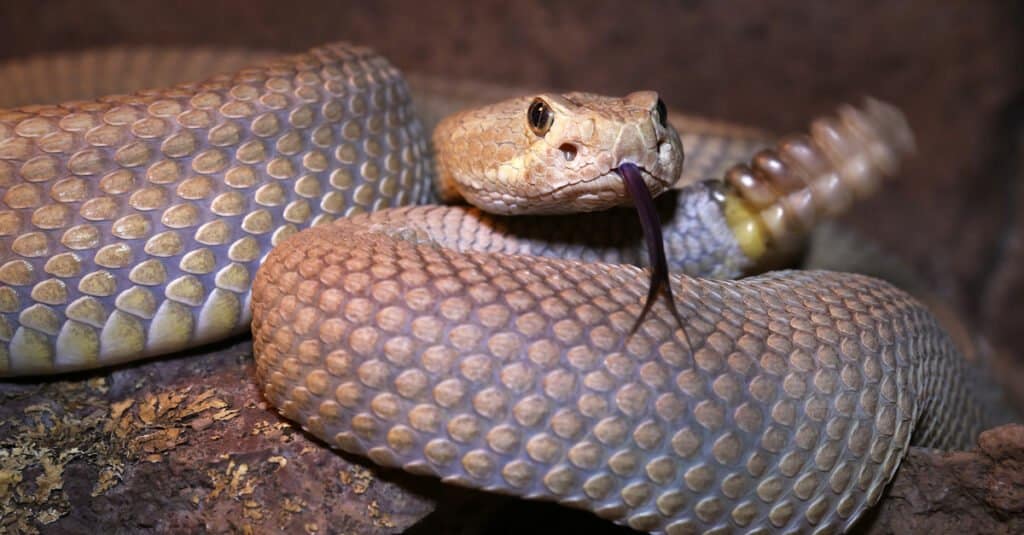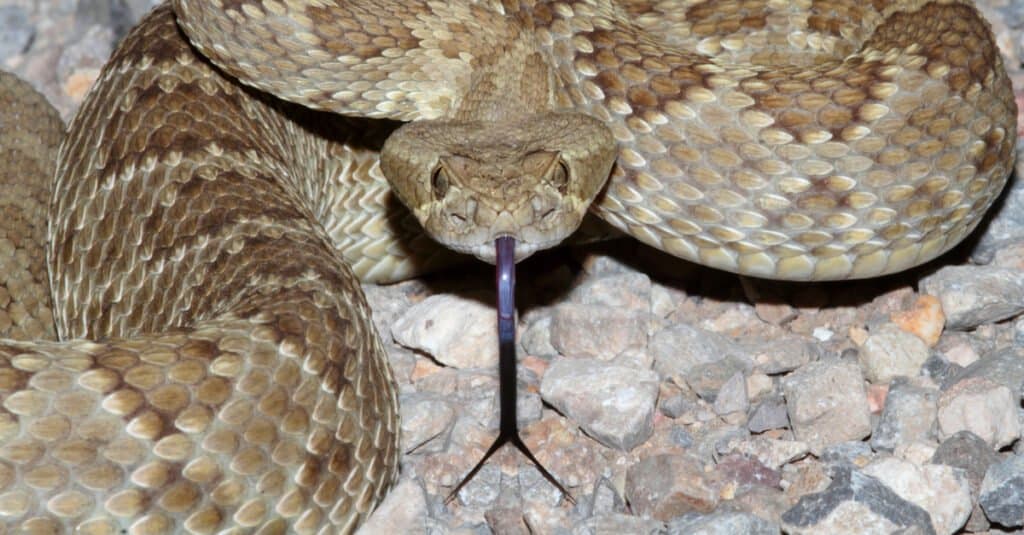Check out this clip from the Breaking Trail series on the Brave Wilderness channel. It follows adventurer Coyote Peterson in a series of amazing environments encountering some incredible animals – often up close. On this particular adventure, he meets some of the most dangerous snakes in the world.
Watch the Entire Video Below
Arizona Rattlesnakes
Coyote describes Arizona as rattlesnake territory and explains that the state is home to 13 different species, which is more than in any other part of the U.S. This particular footage was captured in the Sonoran Desert, Tucson during a night when the conditions were apparently perfect for spotting rattlesnakes!
He enters an arid, sandy area where kangaroo rats are living, which is a great sign that rattlesnakes are nearby. Coyote grasps the surprisingly cute kangaroo rat so that we can get a closer look at the powerful hind legs and huge feet before he releases it. These guys can jump as far as nine feet — which is useful when you have a rattlesnake chasing you!

Arizona is home to 13 different species of rattlesnake, including the Mojave rattlesnake.
©Ryan M. Bolton/Shutterstock.com
Rattlesnake’s Reputation
Rattlesnakes are famous even in parts of the world where they do not live! They have a bad reputation and trigger fear and terror in many humans. In some ways, this is justified.
Coyote identifies the first snake discovered in this expedition as a western diamondback rattlesnake. These are the stars of many Western movies. But within seconds, he realizes that it is, in fact, a Mojave rattlesnake which is the most venomous rattlesnake on the planet!
Keeping the snake calm and making sure that the cameraman keeps a safe distance away are the priorities now. These guys can strike over a long distance (up to two-thirds of the length of their body) with incredible speed. The white bands on the tail are thicker than the black bands and that is the distinguishing feature.
Despite being disturbed, the snake is reluctant to strike. In fact, snakes will try to avoid striking if they can because it uses up their venom. Sometimes you can tell that they are getting ready to strike because they puff up their bodies. The snake senses the movement of the cameraman and rattles its tail as a warning. The atmosphere is incredibly tense!
We learn that Mojave rattlesnakes can produce Type A or Type B venom, depending on the environment that they live in. Type A is a strong neurotoxin but Type B is a hemotoxin. For both, the venom load is incredibly high. If you get bitten by one of these snakes, get to a hospital right away!

The Mojave rattlesnake is the most venomous rattlesnake on Earth.
©Steve Byland/Shutterstock.com
Other Amazing Animal Videos You Might Like
In the video, whales are depicted swimming behind a boat. The video captures glimpses of their dorsal fins appearing intermittently above the water’s surface, and at times the sleek outline of a whale can be seen in the boat’s wake.
Some whales even jump out of the water on either side of the wake, which excites the onboard tourists who eagerly record the experience with their cameras.
They start to swim on their sides while displaying their distinguishing black-and-white pattern and color. They have white bellies, a white patch directly between their eyes, and black backs.
You can hear someone say, “Unreal!” As the whale slowly falls back. It’s still a mystery why the whale took such an interest in the boat.
The photo featured at the top of this post is © J.A. Dunbar/Shutterstock.com
Discover the "Monster" Snake 5X Bigger than an Anaconda
Every day A-Z Animals sends out some of the most incredible facts in the world from our free newsletter. Want to discover the 10 most beautiful snakes in the world, a "snake island" where you're never more than 3 feet from danger, or a "monster" snake 5X larger than an anaconda? Then sign up right now and you'll start receiving our daily newsletter absolutely free.
Thank you for reading! Have some feedback for us? Contact the AZ Animals editorial team.






